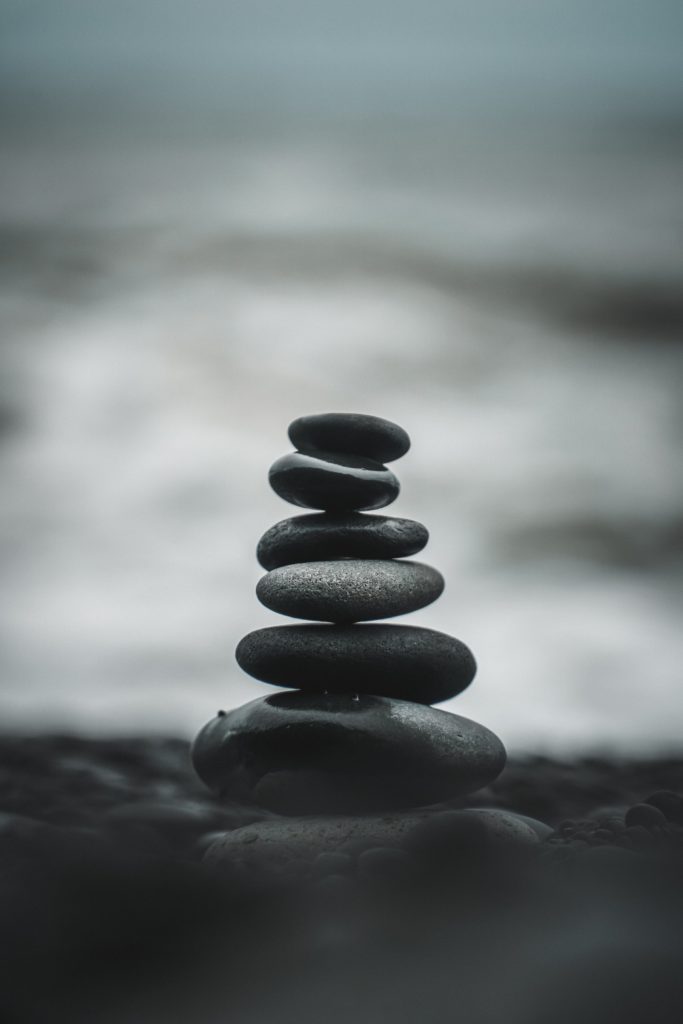How To Use Essential Oils For
Natural Pain Relief
By GRACE JAUWENA at LifeandHealth.org

Essential oils are a wonderful alternative for pain relief. I like to refer to it as a pain relief oil because that is essentially what it is accomplishing! If you are not yet familiar with essential oils, be sure to check out this other post, Making Scents of Essential Oils. Although these oils can be used in for a variety of things, such as a natural remedy for anxiety, allergies, nausea, and more, today we’ll be addressing pain relief. Essential oils differ from aromatherapy oil. Aromatherapy is a dilution of an essential oil and is commonly used for massage. I recommend using the highest quality and purest form of essential oils possible. More information on that is provided below.
We all have varying tolerance levels of pain, but we all love relief from pain; small or large. If you would like to learn about various essential oils that help treat pain, and the correct way to use them, keep reading!
PRE-MASSAGE TIPS
- Hydrate well the day before and the day of your massage.
- Arrive 5-10 minutes early to begin your relaxation. If this is your first time, please arrive 15 minutes early to also fill out the confidential client health history.
- If you’re allergic to oils or lotions, tell your massage therapist beforehand.
- Avoid cosmetics and fragranced products. The synthetic chemicals and aromas do not combine well with aromatherapy oils used.
- Use the restroom. Massage moves fluid out. 60 minutes can be a long time, and our 90-minute signature massage is an especially long time.
- Turn OFF cellphone, unless you are expecting an emergency call.
- Communication is key with your therapist. If you find music distracting, tell your massage therapist. The same goes for talking. This is your massage.
- Tell your therapist about any particular areas you want to focus on, as well as, what difference you want to feel by the end of the session.
- Avoid alcohol and caffeine.
- Eat a light meal to keep your blood sugar stable and to avoid any lightheadedness.
POST-MASSAGE TIPS
- After your massage, the massage therapist will allow you to slowly get up and get dressed in privacy.
- Your therapist will offer you water after you’re dressed. Drink plenty of water after your appointment to help rehydrate, build healthy muscle tissue, and remove metabolic wastes that accumulate as your muscles are worked out.
- In general, working out immediately after a massage is not a good idea as you may likely stress and strain the muscles that were just relaxed. Rest and relax to allow your body to settle.
- Skip the latte. Try herbal tea instead, as caffeine after a massage can tense the muscles just worked on.
- Avoid alcohol.
- If you feel any soreness, treat it. For the same reason muscles get sore after a stellar exercise session, they can get a little sore after a rubdown. After deep work, icing is recommended to lessen any immediate soreness.
- Light stretching or yoga is nice because the muscles are warmed up. Getting a chiropractic adjustment after is perfect harmony.
- The benefits of massage are cumulative, so work with your massage therapist to customize a plan to meet your health and wellness goals.
What is the difference between Medical and Spa Massage
Massage in general has many benefits to your mental and physical health. Both Spa Massage and Medical Massage can bring relief from mental and physical stress and tension. Neither should be considered better than the other. The primary differences between these two types of massage is intent of outcome, organization of visits and specialized skill sets utilized in the different modalities.
Spa massage is focused on the clients comfort, it helps to relieve mental and muscular tension and improve circulation. It is suggested monthly to quarterly depending on your lifestyle. The most common modalities used in massage you will receive at a spa are swedish, deep tissue, and hot stone massage. Spa massage is usually more of a maintenance massage.
Medical massage is designed to address known or unknown pain and trauma to the muscular, neurological, lymphatic and energy systems. They usually begin with an initial assessment and then a designed treatment plan. Treatment plans are organized to have weekly to bi-weekly massage for a specific length of time. As improvement occurs the frequency is reduced until you are seeing the massage therapist monthly or quarterly for maintenance. Medical massage therapists have often undergone considerable specialized training such as a certificate in Medical Massage, Neuromuscular/trigger point, Myofascial Release, Lymphatic, Craniosacral, Shiatsu Shin Tia Massage and Reiki energy work. Massage therapist that specialize in medical massage may work in a medical office, as part of a Physical Therapist or Chiropractic team, or work independently in a spa or clinical setting. Neither type of massage, “Spa or Medical” is necessarily better than the other. The pertinent question is, what am I looking to gain from my massage? Posted below are things that different types of massage may assist with.
SPA
Swedish and Hot Stone Massage – Relaxation of tight muscles and decompression from your work week and everyday stress. Relief from stress is essential in our busy lives.
Deep Tissue – Some people require more pressure and deeper work to really get the mind, body, and spirit to relax.
Medical
Myofascial, and Neuromuscular Massage – Carpal Tunnel Syndrome, Chronic stiff neck, Fibromyalgia, Physical Trauma, Joint Mobilization, Low back pain, Osteoarthritis, Rheumatoid Arthritis, Stroke, Muscular Dystrophy, Cystic Fibrosis, Plantar Fascitis, Cerebral Palsy, Osteoporosis, Exaggerated Kyphosis, Exaggerated Lordosis, Scoliosis, Frozen Shoulder, Rotator Cuff Injuries, Whiplash, and Shin Splints. Regaining range of motion and improved function after orthopedic surgery, Increasing range and ease of motion over the entire body.
Sports Massage – Relief from tight muscles from your regular exercise program or Pre and Post event massage for those participation in a sporting event.
Manual Lymphatic Drainage – Lymphedema or lymphatic issues. Suggested after liposuction surgery and other surgeries that may disrupt normal lymphatic function.
Craniosacral – Soft tissue release that nourishes the central nervous system to improve overall health. Used to support physical and emotional health issues.
Reiki – Client remains fully clothed. Calming the nervous system, balancing the energetic body, Pre and post-surgical, post cancer treatment recovery, emotional, spiritual and physical trauma.
I hope this helps to expand your understanding of what types of massage will address your personal needs.




